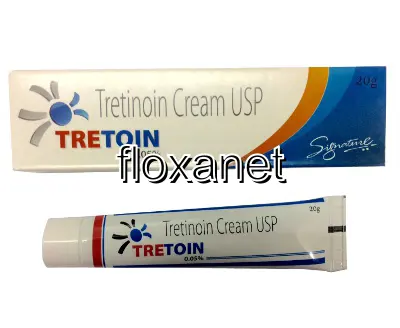Buy Tretinoin Online in Ireland
| Package | Dosage | Price | Price per Dose | |
|---|---|---|---|---|
| Dosage: 0.1% | ||||
| 5 tube | 0.1% | €118.08 | €23.62 | |
| 4 tube | 0.1% | €103.91 | €25.98 | |
| 3 tube | 0.1% | €92.10 | €30.70 | |
| 2 tube | 0.1% | €68.48 | €34.25 | |
| 1 tube | 0.1% | €41.32 | €41.32 | |

Tretinoin Description
Overview of Tretinoin
Tretinoin is a powerful medication widely used in dermatology to treat various skin conditions, particularly acne. It is a derivative of Vitamin A, also known as retinoic acid. Its primary function is to promote skin cell turnover, helping to clear up clogged pores and reduce the formation of acne lesions. Due to its effectiveness, Tretinoin is often considered a frontline treatment for acne vulgaris and other skin issues. It is available in different formulations, including creams, gels, and liquids, allowing flexibility based on the patient's skin type and condition.
Mechanism of Action
Tretinoin works by affecting the growth and differentiation of skin cells. It encourages the shedding of old, dead skin cells that can clog hair follicles. At the same time, it stimulates the production of new, healthy skin cells. This dual action helps prevent the formation of comedones, which are the precursors to acne pimples. Additionally, Tretinoin has anti-inflammatory properties that reduce redness and swelling associated with acne. Over time, regular use can improve skin texture, tone, and overall appearance, making it a popular choice for those seeking clearer, smoother skin.
Uses and Benefits
The primary use of Tretinoin is for acne treatment, particularly for moderate to severe cases. It is effective in reducing both inflammatory and non-inflammatory acne lesions. Beyond acne, Tretinoin is also used to treat skin aging signs such as fine lines, wrinkles, and hyperpigmentation. Many dermatologists recommend it as part of a comprehensive skincare routine. The benefits go beyond mere acne clearing; it enhances skin renewal processes, leading to revitalized skin that looks healthier and more youthful. With consistent application, users often notice a significant improvement in skin clarity and texture.
Potential Side Effects and Precautions
While Tretinoin is highly effective, it may cause side effects, especially during the initial weeks of use. Common issues include skin redness, peeling, dryness, and increased sensitivity to sunlight. These effects are usually temporary and lessen with continued use and proper skincare. It is important to use sunscreen daily and avoid excessive sun exposure to prevent irritation. Pregnant and breastfeeding women should consult their healthcare providers before using Tretinoin, as its safety during pregnancy has not been fully established. Additionally, individuals with sensitive skin should start with lower concentrations or seek advice from a dermatologist.
Application Tips
Proper application is crucial for achieving desired results with Tretinoin. Users should start with a small amount and apply a thin layer to the affected areas, usually once nightly. It is recommended to wash the skin gently with a mild cleanser and wait for it to dry completely before applying. Avoid using harsh scrubs or other irritating products simultaneously. Consistency is key; results may take several weeks to become noticeable. Overuse can increase irritation, so following the prescribed dosage and frequency is important. Moisturizers can be used to minimize dryness and peeling, but they should be oil-free and non-comedogenic.
See Also

